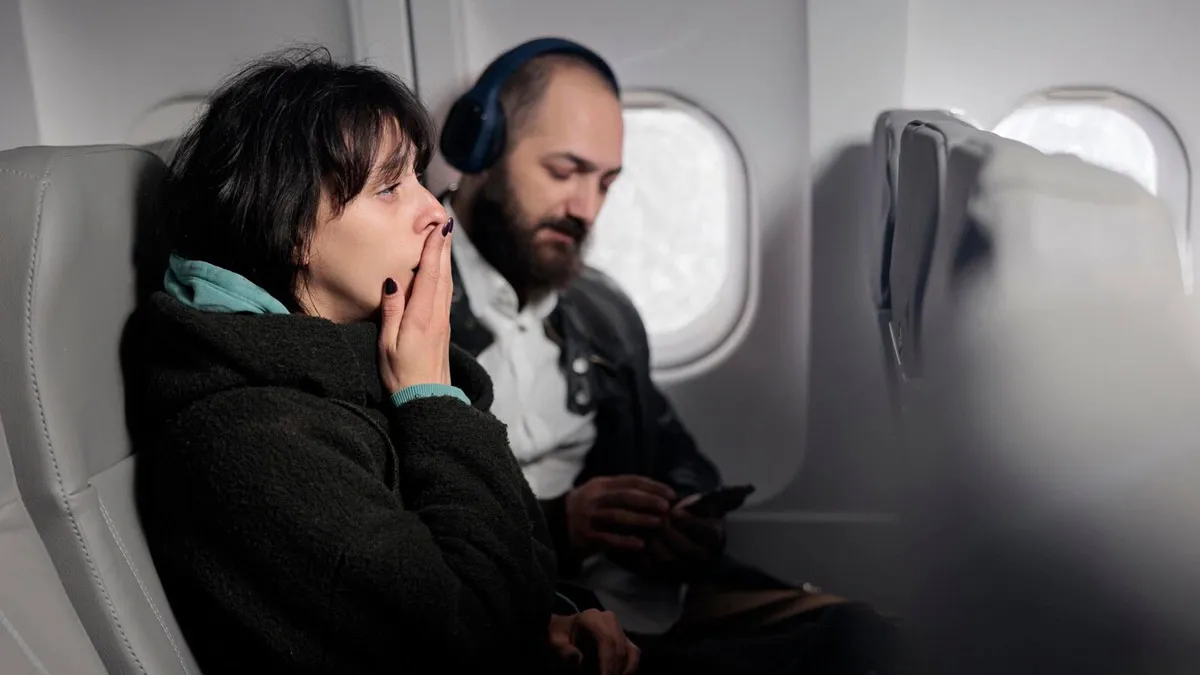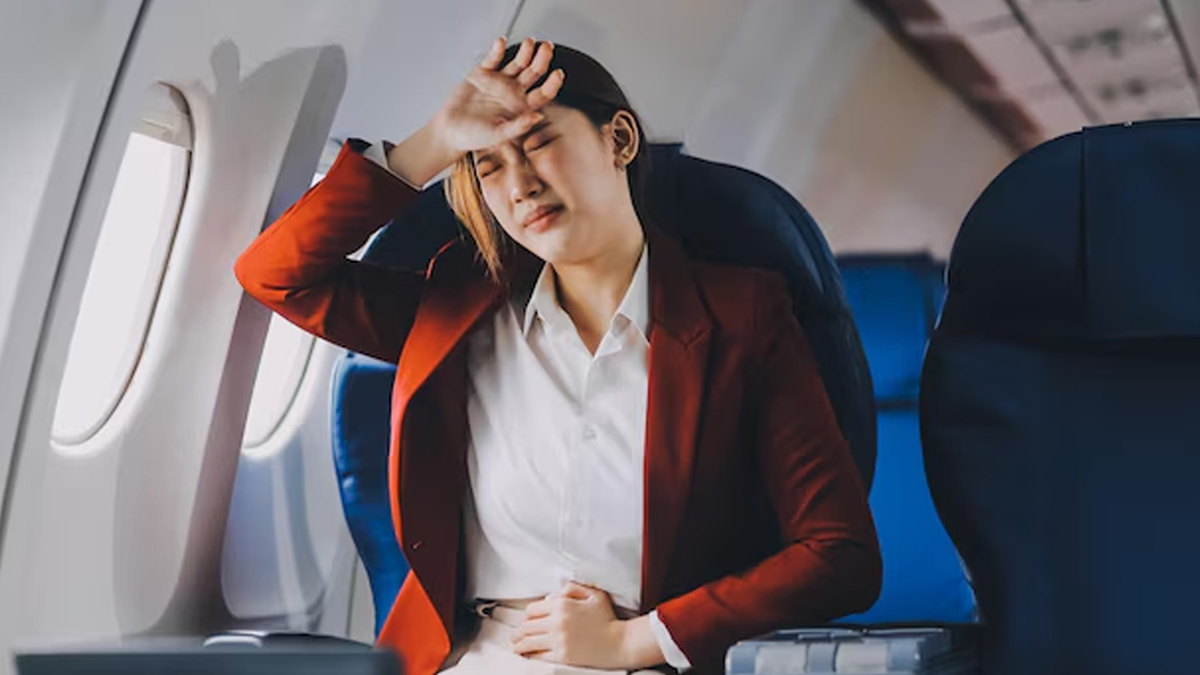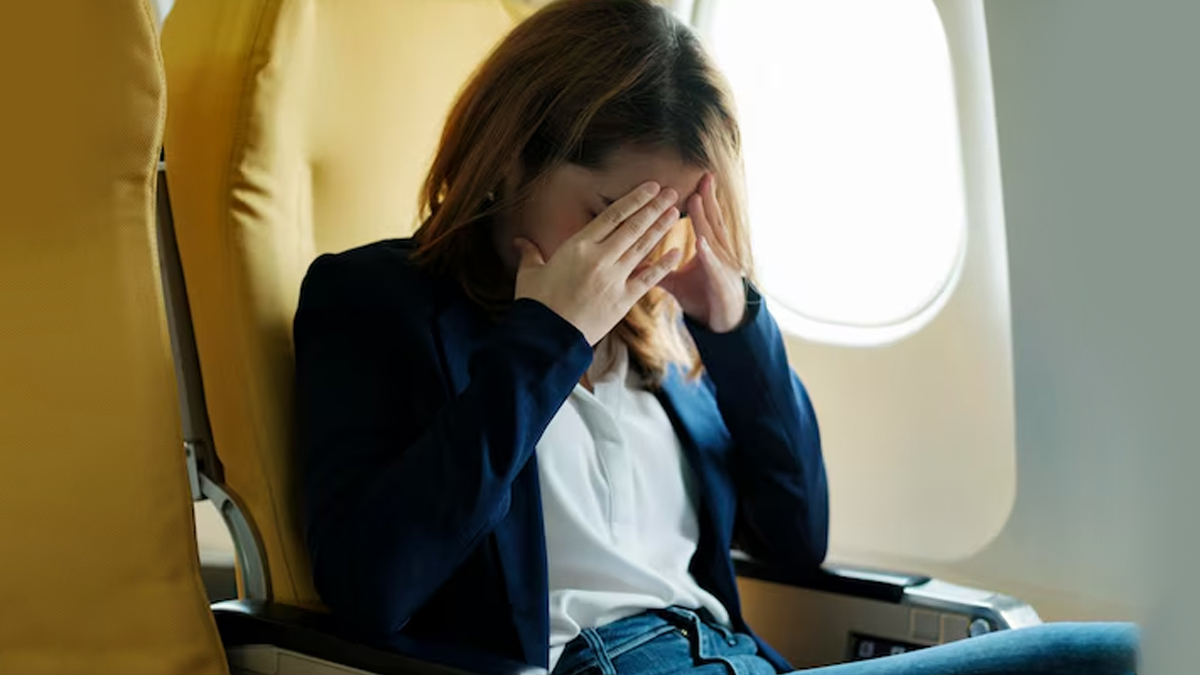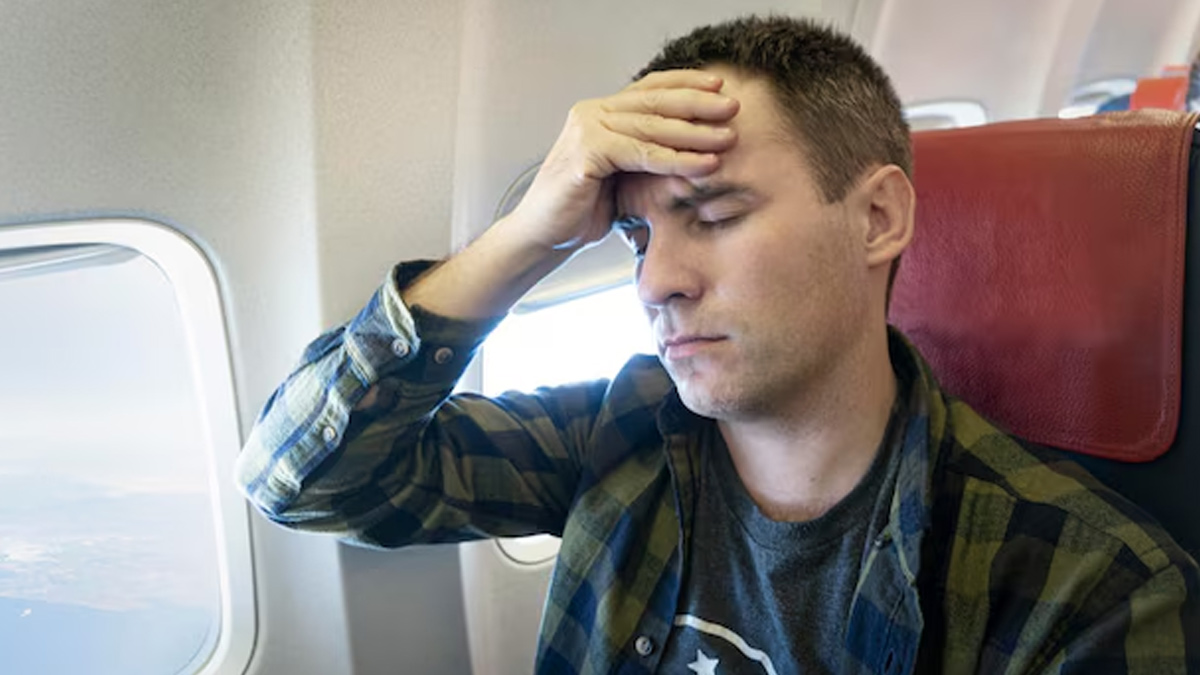
If you're flying for the first time, it's natural to feel nervous since everything is new and unfamiliar. But that doesn't mean frequent flyers are immune to flight anxiety. In fact, those who have flown before may feel even more anxious, knowing exactly what can go wrong and what to expect. The OnlyMyHealth team interacted with Dr Tonmoy Sharma, Psychiatrist, Founder and CEO - Merlin Health, to understand the common triggers of flight anxiety and how one can calm their nerves.
Table of Content:-
CHECK YOUR
MENTAL HEALTH

What Is Flight Anxiety?

Flight anxiety, or aerophobia, is a condition of panic and fear of flying that can be manifested by a range of symptoms, both physical and behavioural. Common symptoms include sweating, increased heart rate, and nausea. Other people tend to develop intrusive thoughts about plane crashes, anxiety about turbulence, and claustrophobia. Flight anxiety or phobia can also result in people avoiding flights, being very upset before and during flights, and being unable to concentrate.
Also Read: Why You Shouldn't Cross Your Legs On A Plane
According to Dr Sharma, flight anxiety isn’t always dramatic; it doesn’t have to look like panic attacks or sudden tears. "Sometimes, it’s a quiet tightening of the chest before takeoff, a restless night before travel, or the relentless loop of “what if” thoughts that start days ahead of departure. And if you’ve felt this, you’re far from alone," he explained. "It triggers fear for many reasons: loss of control, turbulence, unfamiliar sounds, or even just the pressure of being confined in a metal tube thousands of feet above the ground.”
“But here’s what often helps: preparation that soothes, not overwhelms; habits that ground you, not force you to ‘snap out of it'; and practices that meet your anxiety where it is with softness, not shame,” Dr Sharma added.
How To Calm Your Nerves Before Flying

If you are a nervous flyer or if you feel anxious about the thought of flying in an aeroplane, here’s what you can do to reduce or manage your anxiety.
“Before your trip, try grounding yourself in small rituals that ease your system. Natural methods to calm flight anxiety include practising mindfulness, doing light stretches the night before, listening to calming music, or sipping chamomile tea. Try cutting back on caffeine and reach for something gentler, a warm shower or just quiet time away from your phone. Sometimes, a moment of slowness is the best antidote to a racing mind,” advised Dr Sharma.
Breathing Is Key
One of the most powerful tools for calming in-flight anxiety is something we carry with us always: our breath, said Dr Sharma.
According to him, breathing exercises help reduce anxiety while flying by doing more than “distracting” you; they signal to your nervous system that you’re safe. Techniques like box breathing or the 4-7-8 method are simple and portable. You don’t need anything fancy, just a few conscious inhales and exhales, repeated gently until the edge softens.
However, remember: “There’s no need to force relaxation. The aim isn’t perfection; it’s presence. To remind yourself, moment by moment, that you’re here, and you’re okay.”
Also Read: Travelling With Rheumatoid Arthritis? Here Are Things To Remember For A Pain-Free Trip
Some Find Comfort In Over-The-Counter (OTC) Medications

Medications like diphenhydramine can have a sedative effect, while melatonin can help regulate your sleep cycle.
Herbal supplements like valerian root or passionflower may also offer calm to some.
What matters is that any aid you choose comes from an informed place after speaking with your doctor or pharmacist.
It’s crucial to understand that needing a little help doesn’t mean you’re weak; it means you’re human.
Know What To Expect
“One surprisingly effective way to reduce fear is to simply know what to expect during a flight,” shared Dr Sharma, adding that when you understand what turbulence is – normal shifts in air pressure that pilots are trained to navigate – it becomes less ominous.
When you’ve read that strange mechanical sounds during takeoff are often landing gear retracting or cabin pressure adjusting, you’re less likely to spiral.
“The more you understand the rhythms of a flight, the less your mind needs to fill in the blanks with dread. Pick a seat that makes you feel safest. Many say the middle over the wing has the least motion, and don’t hesitate to let the crew know you’re feeling anxious. You’re not a burden. You’re a person asking for support,” the doctor concluded.
Also watch this video
How we keep this article up to date:
We work with experts and keep a close eye on the latest in health and wellness. Whenever there is a new research or helpful information, we update our articles with accurate and useful advice.
Current Version